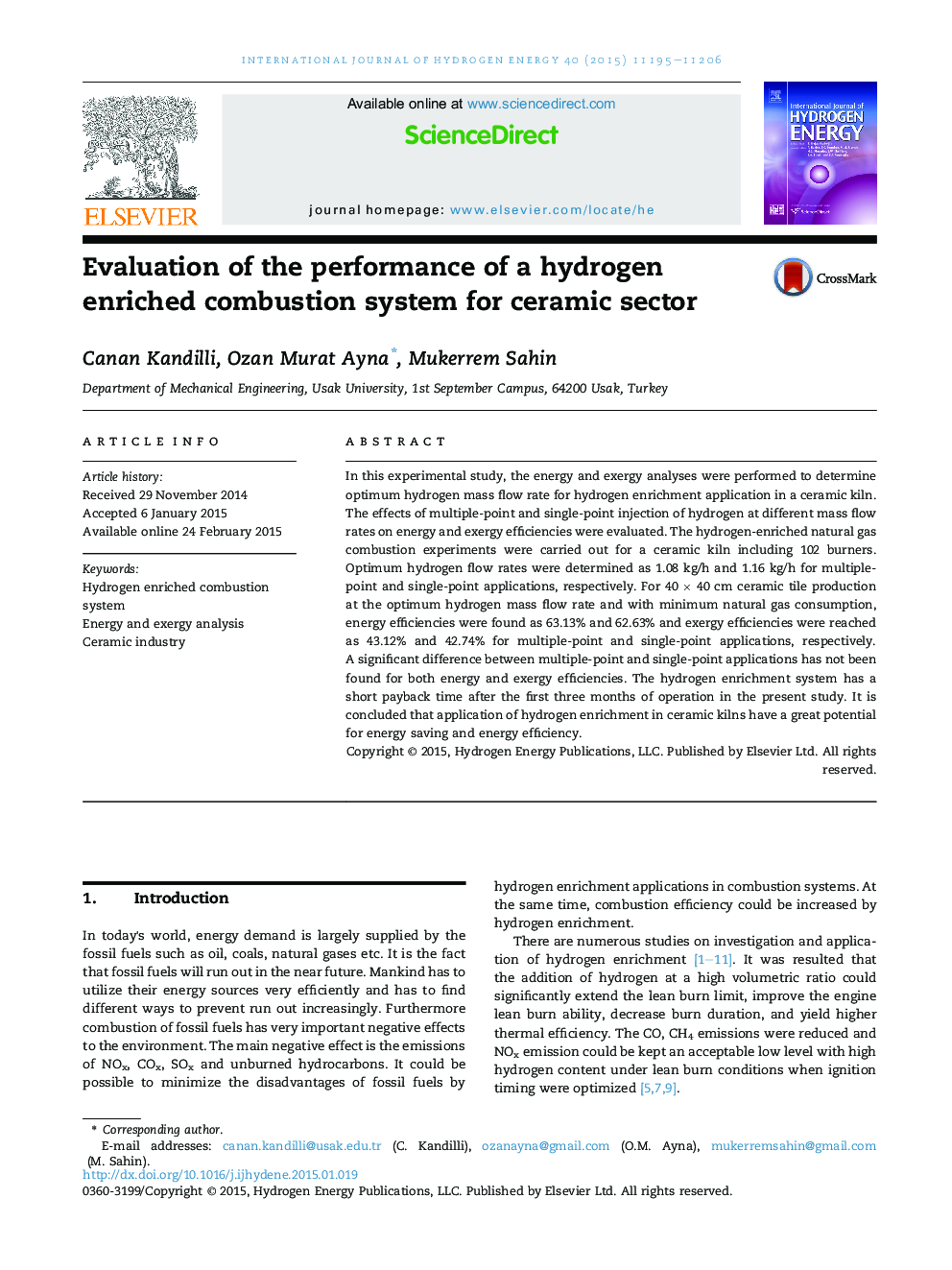| Article ID | Journal | Published Year | Pages | File Type |
|---|---|---|---|---|
| 7714890 | International Journal of Hydrogen Energy | 2015 | 12 Pages |
Abstract
In this experimental study, the energy and exergy analyses were performed to determine optimum hydrogen mass flow rate for hydrogen enrichment application in a ceramic kiln. The effects of multiple-point and single-point injection of hydrogen at different mass flow rates on energy and exergy efficiencies were evaluated. The hydrogen-enriched natural gas combustion experiments were carried out for a ceramic kiln including 102 burners. Optimum hydrogen flow rates were determined as 1.08Â kg/h and 1.16Â kg/h for multiple-point and single-point applications, respectively. For 40Â ÃÂ 40Â cm ceramic tile production at the optimum hydrogen mass flow rate and with minimum natural gas consumption, energy efficiencies were found as 63.13% and 62.63% and exergy efficiencies were reached as 43.12% and 42.74% for multiple-point and single-point applications, respectively. AÂ significant difference between multiple-point and single-point applications has not been found for both energy and exergy efficiencies. The hydrogen enrichment system has a short payback time after the first three months of operation in the present study. It is concluded that application of hydrogen enrichment in ceramic kilns have a great potential for energy saving and energy efficiency.
Related Topics
Physical Sciences and Engineering
Chemistry
Electrochemistry
Authors
Canan Kandilli, Ozan Murat Ayna, Mukerrem Sahin,
